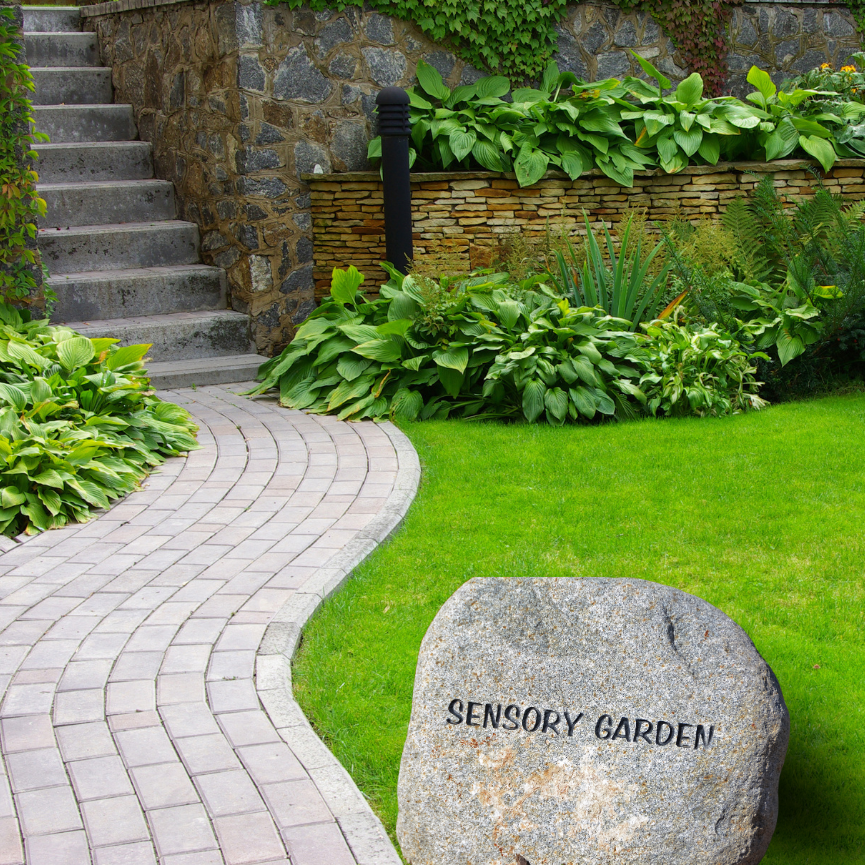
- May 09, 2024
- 212 Views
- 0 Comments
Benefits Of Sensory Gardens For Autistic Individuals
Sensory Gardens and Their Transformative Effect on Autism
In recent years, the concept of sensory gardens has gained significant traction as a holistic approach to supporting individuals with autism spectrum disorder (ASD). These unique outdoor spaces are designed to engage and stimulate the senses, offering a range of benefits that can positively impact the lives of autistic individuals. This article delves into the world of sensory gardens and explores the myriad advantages they provide for those with ASD. From sensory stimulation to therapeutic outcomes, sensory gardens offer a transformative experience that nurtures both the mind and body.
Understanding Autism Spectrum Disorder
Prior to discussing the advantages of sensory gardens for people with autism, it is important to comprehend the characteristics of autism spectrum condition. A neurological disease called autism impacts behavior, social interaction, and communication. There is a broad spectrum, with different impairment levels and distinctive traits displayed by every person. Autism is characterized by sensory sensitivity, whereby individuals frequently experience either increased or decreased sensory perception. Here's where sensory gardens come into play.
What Are Sensory Gardens?
Sensory gardens are thoughtfully designed outdoor spaces that incorporate a diverse array of sensory elements to create a multi-sensory experience. These elements can include visual, auditory, tactile, olfactory, and even gustatory stimuli. The aim is to provide a safe and controlled environment where individuals can explore and engage with their surroundings at their own pace. From vibrant flowers and textured surfaces to wind chimes and aromatic herbs, sensory gardens are a cornucopia of sensory delights.
Benefits of Sensory Gardens for Autistic Individuals
- Sensory Stimulation and Regulation: Sensory gardens provide a controlled environment for individuals to engage with sensory stimuli. This exposure can help individuals gradually build tolerance to sensory triggers and enhance sensory regulation. The calming effects of sensory garden elements can also assist in reducing anxiety and sensory overload.
- Enhanced Communication: For many autistic individuals, verbal communication can be challenging. Sensory gardens offer alternative modes of expression through sensory experiences. Pointing to a visually appealing flower, engaging with textured surfaces, or enjoying the sound of flowing water can serve as nonverbal communication methods.
- Stress Reduction: The serene and peaceful atmosphere of sensory gardens can significantly reduce stress levels. Exposure to nature and natural elements has been shown to lower cortisol levels and promote relaxation. This is particularly important for individuals with autism who may experience heightened stress and anxiety.
- Improved Motor Skills: Sensory gardens encourage physical interaction with the environment. Activities such as digging in soil, touching various textures, and maneuvering around the garden can help develop fine and gross motor skills. These activities also offer a platform for occupational therapy interventions.
- Cognitive Stimulation: Engaging with the sensory elements of a garden can stimulate cognitive functions. Observing patterns in nature, identifying different scents, and exploring cause-and-effect relationships (like water flowing over stones) can promote cognitive development and critical thinking.
- Social Interaction: While sensory gardens are often enjoyed individually, they also provide opportunities for social interaction. Caregivers, family members, or peers can join in the sensory experiences, fostering shared moments of connection and bonding.
- Therapeutic Outcomes: Sensory gardens are increasingly recognized as therapeutic spaces. Horticultural therapy, a practice that involves engaging in gardening activities, can have positive effects on emotional well-being, self-esteem, and sensory integration for individuals with autism.
- Educational Opportunities: Sensory gardens offer a dynamic learning environment. Individuals can explore concepts related to nature, biology, ecology, and more, in a hands-on and engaging manner. This can be particularly beneficial for individuals who thrive on experiential learning.
Designing an Autism-Friendly Sensory Garden
Creating a sensory garden that caters to the needs of autistic individuals requires careful planning and consideration. Here are some design principles to keep in mind:
- Sensory Diversity: Incorporate a wide range of sensory elements, including textures, colors, scents, sounds, and even taste, to cater to individual preferences.
- Safety: Prioritize safety by using non-toxic plants, avoiding thorny or harmful species, and ensuring pathways are accessible for those with mobility challenges.
- Zoning: Divide the garden into zones, each featuring distinct sensory experiences. This allows individuals to explore different sensory stimuli without feeling overwhelmed.
- Quiet Spaces: Integrate quiet and secluded spots within the garden for individuals who need breaks from sensory input.
- Accessibility: Ensure the garden is wheelchair accessible and designed with sensory sensitivities in mind. Consider creating raised beds for easy access and interaction.
- Interactive Features: Incorporate interactive elements like wind chimes, water features with adjustable flow, and textured surfaces that can be touched and explored.
Sensory gardens have emerged as sanctuaries of sensory exploration and personal growth for individuals with autism spectrum disorder. The multi-sensory experiences these gardens offer can have a profound impact on sensory regulation, communication, stress reduction, motor skills, and overall well-being. As we continue to embrace inclusive design principles, the incorporation of sensory gardens into public spaces, schools, and therapeutic settings holds immense promise for creating a more compassionate and understanding society that supports and empowers individuals of all abilities. Through the captivating allure of nature's sensory symphony, sensory gardens pave the way for a brighter and more inclusive future.



Comments - 0 comments till now